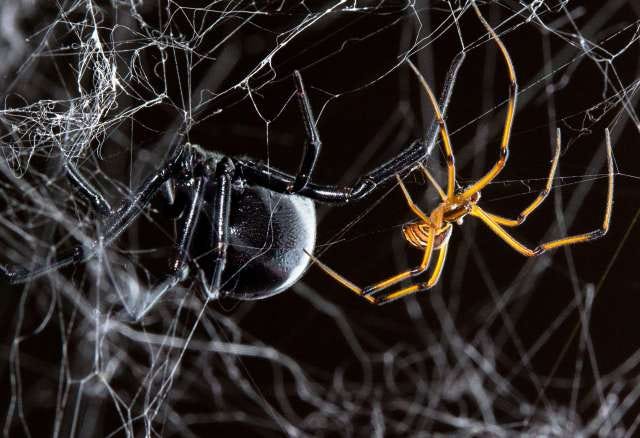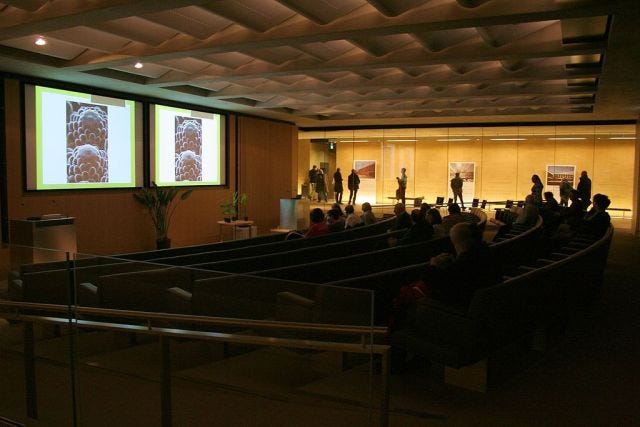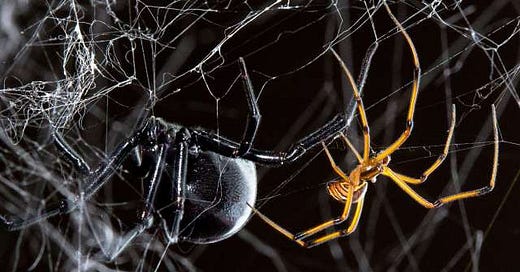Image attribution in presentations
Do you provide attribution for images in your lectures and presentations? If you don’t, here are some reasons why you should.
They say a picture is worth a thousand words. Apparently that’s not enough for a citation.
As a PhD student, I see powerpoint-type presentations regularly – in departmental seminars, in lab meetings, in classes I’m a TA for, and in classes in which I am a student. These presentations typically include beautiful photographic illustrations, usually of wildlife. I’ve noticed recently that whether the presenter is a professor, postdoc, graduate or undergraduate student, the vast majority of the times an image is shown on the screen there is no credit given to the photographer (this and all that follows applies equally to drawings and other illustrations but I’ll use photography as an example here). I see this happen again and again, and it makes me angry. Here’s why.
A good wildlife photograph costs something to produce, including skill, time, and money. It’s increasingly easy to take a decent photo with an iphone or other cell phone camera. But the beautiful wildlife photographs scientists are downloading from the internet to illustrate their presentations are not typically casual iphone snaps. They are more often the result of hours of hard work by a talented photographer who shot hundreds of frames before capturing just the right moment. Their equipment likely cost hundreds, if not thousands of dollars to purchase. They may have spent more money to get to a remote location to find their subject. Maybe they get paid to do this work, but often they do not.
A good wildlife photograph is rich with data. At a minimum it provides information about the morphology of the organism it depicts, in a much more meaningful way than words alone ever could. But it might show an animal engaged in a specific behaviour, or illustrate some kind of interaction between organisms, or otherwise tell a story about natural history. At the same time, it may provide information about the context in which a behaviour occurs, perhaps showing the abiotic environment of the organism, or other members of its community.

Latrodectus hesperus male and female. Photo: Sean McCann (used with permission).
This is an image that I use in every presentation I give about my research. It is beautiful and of technically high quality. It immediately conveys a great deal of information about my study organisms and illustrates several aspects of their natural history that I might want to talk about, including but not limited to their morphology, that they are highly sexually dimorphic, that they build irregular tangle webs, and that males engage in courtship displays on the female’s web. This image was the result of a photography session in the laboratory that lasted most of the day, by a photographer with expensive equipment, who was not paid for his time. He happens to be my partner and scientific collaborator, so I did not have to pay him for the image, and he is happy to let me and other colleagues use the photo to illustrate our science, at no cost, provided we include an appropriate photo credit.
A photographic illustration of my study organism is, to me, a valuable thing. When I use one in a presentation, I think it is worth writing the name of the photographer under the image. It costs me almost nothing, except a bit of room on the slide or on the photograph itself. If done with a bit of care, the photo credit need not distract the viewer. But it gives them the opportunity to take note of the creator of the image, if they are so inclined, and look them up later on. If the photographer is a professional (or even if not) and this leads to a sale, that little photo credit might be worth quite a lot. But that is not the main reason to provide attribution. A photograph is someone else’s work, and in science, when we use someone else’s work, we cite it appropriately.
I do not understand why many scientists don’t make the small effort to include photo credits in their presentations. I have a few non-mutually exclusive hypotheses (if you can think of others, please do let me know):
They are lazy. They can’t be bothered to look up who made the image and write down their name.
They have aesthetic objections to adding photo credits on the grounds that they add “clutter” to slides (this ought to apply to figure citations too, though).
They are unaware of copyright law*, how creative commons image licenses work, and that using other people’s work without attribution is a form of plagiarism. (*Occasionally I see presentations full of non-credited images that slap a “copyright Dr. X” on the bottom of every slide, and I’m not sure whether this constitutes evidence for or against this hypothesis.)
They are aware of the above, but they don’t think a photograph is worth citing.
At this point, I should probably say a bit about copyright and image licenses, in case the first part of hypothesis 3 is correct. If you want to use an image that’s under copyright in a presentation (and unless otherwise indicated, it’s safest to assume any image you find online is under copyright) the best way to avoid infringement is to contact the copyright owner (usually the creator) directly and ask permission. In my experience, they usually say yes, as long as you provide proper attribution. However, the presentations I am talking about are typically for the purpose of education – lectures, class presentations, lab meetings, or departmental seminars. In Canada and the US, it’s probably not copyright infringement to use an image without prior permission if the use is educational (this falls under the “fair dealing exception” in Canadian copyright law and “fair use” in the US, but it’s important to note that not all use of copyrighted materials for educational purposes are necessarily fair use – copyright law is complex). Anyway, if you are using an image without attribution for educational purposes you will not likely be found guilty of copyright infringement, provided it was actually fair use.
With creative commons licensed images (images you find on Wikipedia are typically in this category, or public domain), things are a bit different. These images are under copyright, but depending on the license, they may be used without permission under certain circumstances. They may require that use be non-commercial, or that the image is not altered in any way, and they all have explicit requirements about attribution. Most of the times I’ve seen folks using creative commons images they are violating the terms of the license by not providing proper attribution. Again, you’re very unlikely to be taken to court for such violation in a lecture or lab meeting talk, but that doesn’t mean it’s not wrong. Here’s a nice guide from a Canadian university on how to appropriately cite public domain and creative commons images.
So, in general there are no actual consequences for not abiding by copyright laws when you are using images for educational purposes. There is little risk that the copyright owner will ever see your presentation, let alone take you to court over it. But that’s not really the point.
In writing, when you present ideas that are not your own, you provide attribution with a citation. In presentations, people often include figures that they did not produce themselves, typically from published papers. These are almost invariably accompanied by a citation. It would be wrong (it would be plagiarism) to present someone else’s figure as if it was your own work. An image is a figure too, containing visual, rather than numerical data. It is also wrong (it is also plagiarism) to present someone else’s image as if it was your own work. And if you are giving a talk, I would argue that everything in it should be your own work unless otherwise indicated.
Perhaps at this point some readers may be thinking something along the lines of, “well, everyone takes images off the Internet for their presentations and everyone understands that those images are not the work of the presenter – they are just illustrations.” If this is your position, I urge you to reconsider. What makes a data figure worth more than an image, such that the former deserves attribution but the latter does not? Does your institution’s academic honesty policy make exemptions for plagiarism of images because everyone does it? I’m honestly interested in what arguments there might be against providing credit for photographs – I can’t think of any good ones myself.

“Sainsbury Laboratory Cambridge University building lecture theatre” by Cmglee, licensed under CC-BY-SA 3.0. I can’t tell from this photo, but I hope that the lecturer has included photo credits on the images shown on screen, thereby setting an example of academic integrity for their students.
If none of the above is a convincing argument that it’s good idea to provide attribution for images in talks, I hope this final argument will be. In my experience, instructors and TAs expect undergraduates to provide attribution for work that is not their own in both writing and presentations. If they do not, it’s considered academic dishonesty, and (at least in theory) has severe consequences. I regularly hear instructors and TAs regularly bemoaning the fact that students do not take plagiarism and academic honesty seriously. Some spend time explicitly setting out the rules for using other people’s work in writing and in presentations (I show my students how to find and properly use creative commons licensed images before they give presentations, and I plan to write a post about how to do this soon), and even then some students apparently do not get the message. But consider the example being set by the instructors and TAs who regularly present slides using images without attribution. How can we expect students to take our messages about plagiarism and attribution seriously if they see that their instructors don’t bother with attribution in their own presentations?
To sum up, if you aren’t already, please provide credit for images (and any figures) you use in your presentations. Here are three good reasons:
The photographer who created the image (or the scientist who created the figure) deserves credit for their work
Not doing so constitutes plagiarism, if not copyright infringement
Doing so sets a good example for students


